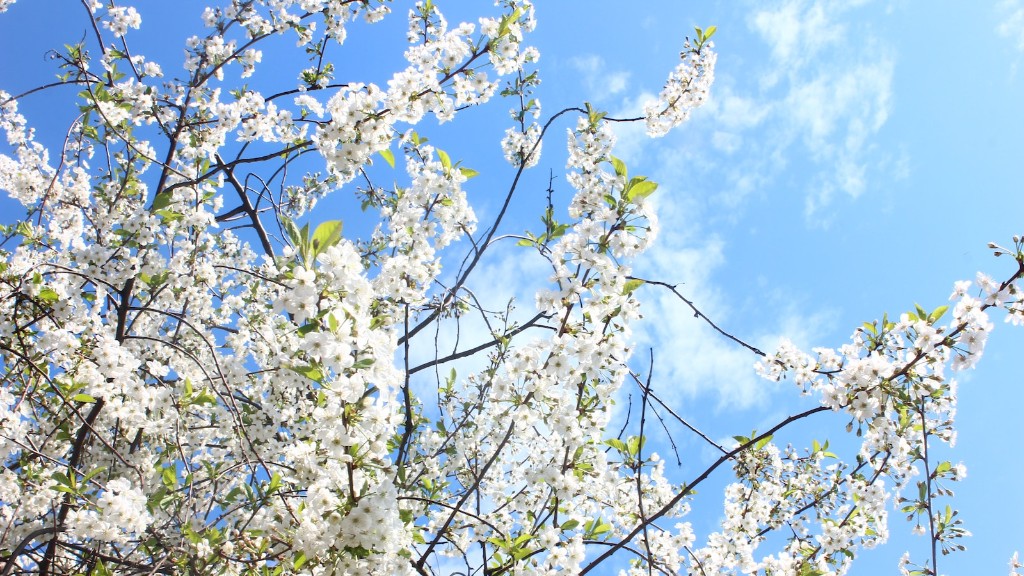Lemon trees are one of the fastest growing trees in the world. They can reach a height of up to 6 meters in two or three years when planted from a seed. Their lush foliage and sweet scent make them popular ornamental shrubs for yards and parks. But what is even more impressive about lemon trees is just how quickly they can put on growth.
Newly planted lemon trees tend to grow more than 1 meter during their first year, and can reach more than 3 meters in the following two years. Although they don’t necessarily grow in a straight line, they do have multiple spurs growing off of a single main stem in order to provide height and coverage. The trunk can reach up to 17 cm in diameter, and each branch can reach from 90 to 110 cm in length. This gives lemon trees the ability to tower above other trees in the garden.
The roots of the lemon tree are powerful and grow quickly. They stay near the surface, just below the grass line. At the same time, the root system is also sturdy and able to support the weight of the tall structure. This allows the lemon tree to be planted in soil that is not particularly deep or rich, and still reach impressive heights.
The most remarkable aspect of a lemon tree’s growth is its speed. Lemon trees start flowering just four months after they have been planted, and in eight months they start producing fruit. A mature lemon tree can reach a height of 6 meters in just two or three years. Lemon trees need proper care to reach this size and keep growing, such as regular pruning, fertilizing, and watering.
In climates that are warm, the growth of lemon trees can be even more rapid. If you live in a hotter area, then you should expect more vigorous growth. Likewise, colder climates can restrict the amount of growth a lemon tree has, but with proper care and protection, the tree can survive to produce fruit for many years.
Nutrient Requirements
For a lemon tree to thrive, certain nutrients and minerals must be present in the soil where it is planted. Essential elements such as nitrogen and phosphorus are required to stimulate healthy growth, whereas calcium, magnesium and iron will help the developing leaves and fruit. Adding organic material into the soil before planting, as well as fertilizing regularly every six to eight weeks, are essential for optimal growth.
Additionally, lemon trees need specific levels of pH in their soils to access vital nutrients. The ideal pH range starts at around 6.0 to 6.5, upwards of up to 7.0. This range is achievable when the soil is constantly kept moist, but not soggy. Once the lemon tree is established, you may need to start mulching, as this helps to retain moisture within the soil and protect the shallow roots.
Lastly, in order to grow healthily, a lemon tree needs adequate sunlight. Lemon trees love the sun, and should be placed in a sunny spot with direct exposure for at least 8 hours per day. This will ensure strong, healthy growth for your lemon tree.
Pruning and Shaping
It is important to prune a lemon tree in order to encourage the optimal shape and size, as well as encouraging fruit production. The trimmed branches will be removed from the tree and burned, chopped or buried to minimize pests and diseases. Pruning should be done as soon as the new growth appears, and be done every two to three months for the best results. The pruned branches should be cut as close as possible to the trunk, and ideally between the nodes.
Moreover, the size of the lemon tree can be limited through pruning. If a large tree needs to be kept smaller, then the branches need to be cut back to a smaller size in order to limit the tree’s eventual size. Pruning should also be done to encourage the tree to produce more fruit. By removing some of the branches, the tree will be able to direct more of its energy and resources towards producing ripe, juicy lemons.
In addition to pruning, shaping the lemon tree can also be done to help reduce the overall size of the mature tree. When shaping, the branches should be cut to form a crown-like shape so that the tree can still receive adequate sunlight to reach its full potential. This will encourage strong and even growth for the lemon tree.
Pests and Maintenance
Lemon trees can be prone to many pests and diseases, so it is important to monitor for any signs of an issue in order to avoid an infestation. Citrus trees are particularly vulnerable to scale infestations, which can make your tree look unhealthy and cause the branch tips to curl up. To reduce scale infestations, the tree should be sprayed regularly with a solution of insecticidal soap.
Furthermore, cuts and cracked branches should be inspected and immediately pruned off. This helps to avoid the potential of a disease entering the tree through the wound. Any leaves that look discolored or dry should also be removed. Lastly, citrus trees may sometimes develop fungal diseases, so it is important to spray the trees with a fungicide every two to three months.
General Care
Lastly, general care needs to be a part of the routine in order to keep your lemon tree happy and healthy. The tree should be watered as needed, and it is important to check the soil moisture before you water, as overwatering can just as easily be a problem. Citrus fertilizers should also be applied to the soil every six to eight weeks to ensure that the lemon tree is getting the nutrients it needs.
Additionally, the soil around the tree needs to be kept clean and free of any weeds or other unwanted material. Weeds are competitors for precious water and nutrients, and can even introduce new pests or diseases to your lemon tree. Lastly, it is important to remember to rotate your lemon tree every couple of months to ensure that all sides of the tree are getting an even amount of sunlight.



